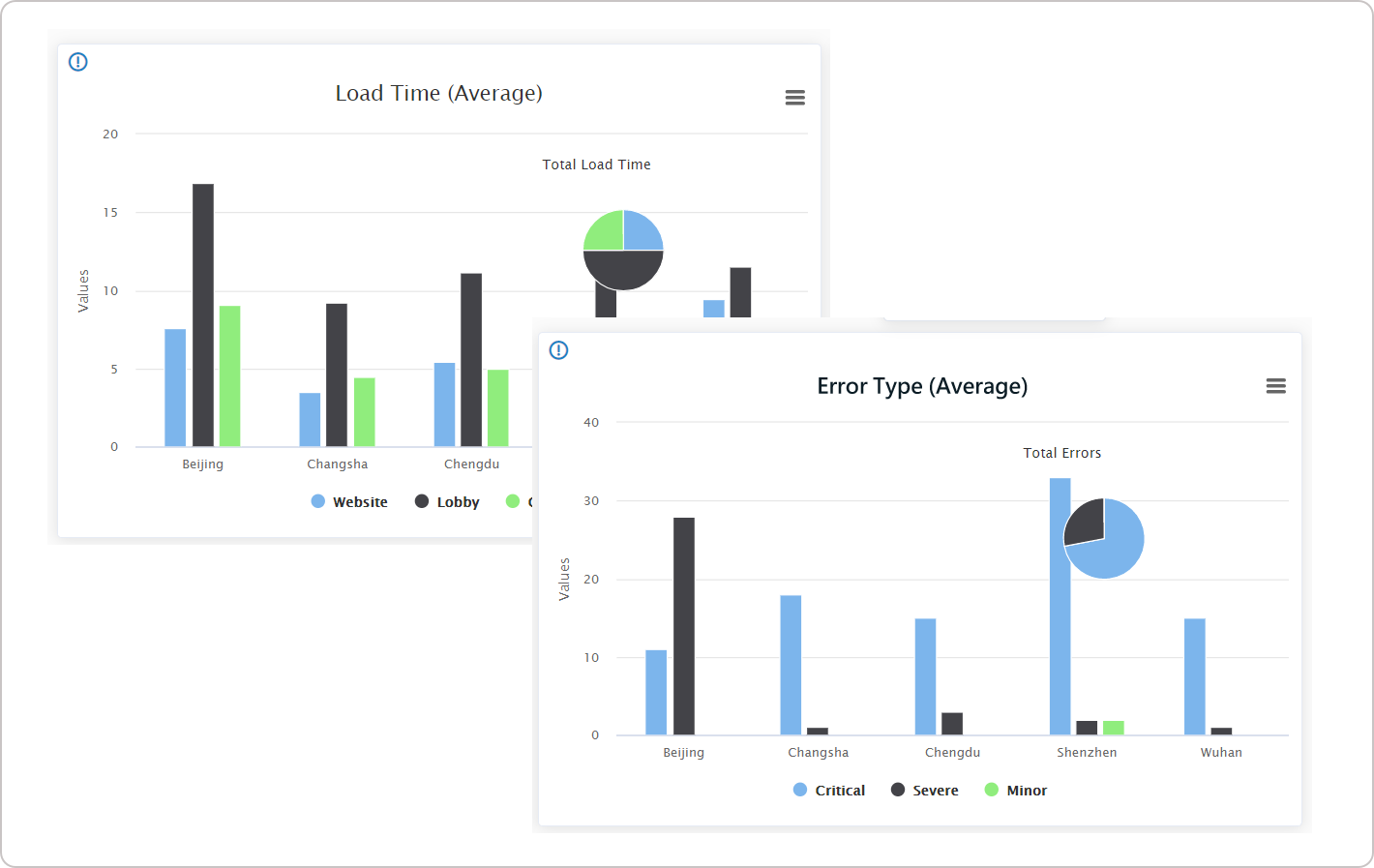In this day and age, delivering the best user experience is crucial. Pages that take too long to load, choppy video playback, and service interruptions are enough to lose customers in the blink of an eye. To this end, there are solutions on the market that help improve the performance of your website or application; the Global Accelerator and the CDN are among these solutions.
Since both services have a common goal (to improve performance), some think that GA and CDNs are the same. Such confusion has motivated us to write this article where we will compare both services and discuss which one is better for your organization to optimize your website performance in China.
What is a CDN?
A Content Delivery Network (CDN) is basically a network consisting of several proxy servers strategically distributed in a certain geography. The main objective of CDNs is to improve the performance of websites by bringing content closer to the physical location of users. So, for example, if your organization runs an app or website from a server located in Europe, you could hire a CDN to deliver content to the United States and another to serve content to users in Asia. Put another way, CDNs provide fast delivery of Internet content, which is handy when it comes to websites with heavy usage of videos, images, or streaming services.

The above definition only covers a small portion of CDNs potential. For instance, in addition to covering a larger geographic area, you can combine multiple CDNs to guarantee the high availability of your services.
Another aspect to consider about CDNs is their operation within China, which is not the same as outside of it. For more information on this aspect of CDNs, we invite you to read our blog post on everything you need to know about Chinese CDNs.
What is a Global Accelerator?
For its part, the Global Accelerator offers a solution to certain problems such as network congestion through the use of Edge Computing. You can think of Global Accelerator as a networking service that improves application performance by using “an alternate, less congested network" to transmit data.
Possibly the best way to understand this concept is with an example. Imagine an 8-lane highway that has no speed limit and joins point A (hosting provider) with point B (user). Now imagine that said highway is the internet. Under normal conditions, using the highway is the optimal solution to get from A to B. But what happens if the highway becomes congested? In that case, a side road might be faster.

Back in the real world, the problem is somewhat more complex. When you browse the internet, you never follow a direct path from your browser to the hosting provider. What actually happens is that the data has to travel through multiple networks until it finally reaches its destination. Instead of a highway, the internet is more like a road that takes you through several towns before reaching your destination.
When you use a service like Global Accelerator, you are assigned a certain number of global static IPs that your application can use as fixed entry points. This solution can improve performance in some cases since you are “bypassing” several public networks and using a high-speed “alternate” route instead.
Global Accelerator Vs. CDN: similarities
There is no better way to clear doubts regarding the Global Accelerator and CDNs than with a comparison. Let's start with the similarities between these two services.
- Performance. Both services seek to improve performance and user experience. Although the performance improvements are in different areas (more on this in the next section), there is no doubt that both services can help your application or website to be faster.
- Edge Computing. Both services, Global Accelerator, and content delivery networks use Edge Computing technology to achieve their goals. That is, both use edge locations (regional data centers) to improve user experience.
- Global Availability. In theory, you could use both Global Accelerator and CDNs to ensure the availability of your app or website on a global scale. However, you will soon learn that this argument does not fully apply to China.
Global Accelerator Vs. CDN: differences
Now that you have an overview of the similarities between the two services, it's time to talk about the differences between CDNs and Global Accelerator.
- Use cases. As explained above, the Global Accelerator aims to ensure that your application or website uses the "optimal path" to transmit data. To this end, the Global Accelerator routes the traffic to the nearest edge location, which in turn is responsible for routing said traffic to the nearest regional data center endpoint. Please note that the Global Accelerator does not cache content; it only helps the data follow the best route. On the other hand, CDNs seek to bring users closer to static content. In that regard, CDNs do static cache assets in edge locations closer to the end-user. Put it simply, the use case for CDNs is to deliver videos, images, audio, and other static assets fast by bringing them closer to the user. For its part, Global Accelerator is more suitable when a minimum latency is required for raw data transfer (for example, bank transactions).
- Supported protocols. A notable difference between both services is the supported protocols. Since CDNs are focused on delivering web content, they usually only support HTTP/HTTPS protocols. For its part, the Global Accelerator use cases make it compatible with non-HTTP protocols such as TCP and UDP.
- Types of IP addresses. This is an aspect where there is also a difference between both approaches. On the one hand, CDNs offer dynamic IPs to the end-user by default. On the other hand, GA's way of handling IP addresses is different. The Global Accelerator also provides dynamic IPs to the end-user, however, all requests to the web page or app are routed using internal static IPs which significantly decreases latency (less traffic since it is an internal network).
- Edge Computing. The way both services use Edge technology is also different. CDNs use regional data centers to cache content; however, the Global Accelerator uses edge locations as an instrument to route traffic to the nearest regional endpoint.
- Performance. The performance gains are different when using a CDN or the Global Accelerator. Think of it this way, CDNs basically free up resources like CPU, disk, memory, and bandwidth from the main server when it caches content near users. The Global Accelerator, however, offers better performance transmitting data between the main server and the users by offering low latency in said data transmission.

Global Accelerator Vs. CDN: which is better?
Up to this point, we have discussed the similarities and differences between CDNs and Global Accelerator. However, a key factor has been left out, which is the effectiveness of these services in China. Due to the GFW and the strict regulations of Internet service within China, the use of any traffic optimization services must be analyzed in detail.
Starting with CDNs, it is particularly difficult to use this kind of service if they are based outside of China. That’s because foreign CDNs are more likely to be targeted by GFW and fail in their mission to deliver content efficiently. It is for this reason that using both a China-based web hosting company and a China-based CDN for delivering content is the ideal solution if your organization is looking for the best user experience.
Moving on to the Global Accelerator, the scenario is similar. Hiring any cloud provider outside of China can be counterproductive. Again, it is best to use a local service duly registered with the Chinese authorities.
Now, even if your organization follows these tips and favors China-based hosting services, CDNs, and Global Accelerator, this does not mean that your app or website is free from problems. That’s because even if you use local vendors, the complexity of the Chinese market still makes it possible for your content to be blocked or your service to be slowed down. That's not to mention the inherent problems of CDNs during peak traffic hours or service congestion in certain areas.
You may be wondering, what would be the solution then?
The most efficient way to face the unique challenges presented by the Chinese market is to use a comprehensive solution such as the one provided by GCC's Total Solution.
Conclusion: how to face the challenges of China
Both CDNs and Global Accelerator have limitations. However, by combining both solutions, interesting results can be obtained. GoClick China specializes in optimizing web resources in a convenient way that ensures you deliver the best possible user experience. Thanks to multiple strategic partnerships with cloud providers and Tier 1 ISPs within China, GoClick China offers you a fully managed China CDN, hosting solution to deliver a faster, fuller, more consistent web experience to end visitors in China. This is possible thanks to our custom API that helps you select the best CDN at any given time. That is, if a CDN becomes congested, suffers an outage, or is temporarily blocked, our Total Solution allows you to easily switch to another CDN and thus maintain the quality of your service.



